
views
Lighting up the Bonfire

Collect firewood in the days before Lohri. As Lohri approaches, it’s customary to search for dry twigs, branches, and logs, which will provide fuel for the fire. If you’re far from a forest, you could always purchase firewood. The bonfire is the main aspect of a Lohri celebration, so make sure you have plenty of firewood on hand. The bigger the bonfire, the better the celebration!

Dig out a wide, circular area of dirt or sand. Choose a site that’s far away from homes and other structures, trees, shrubs, and any flammable objects. Remove grass and other combustible materials from a circular patch at least 10 feet (3.0 m) in diameter. If necessary, spread dirt or sand over the circle, then place bricks or stones around its perimeter. To remove grass, water the area 1 to 2 days in advance. You don't want to work in mud, but it'll be easier to dig out moist grass and soil. Use a spade or shovel to dig away vegetation and, if necessary, loosen stubborn clumps with a spading fork, hoe, or steel rake. Make sure there are no telephone wires or tree limbs above the bonfire site.
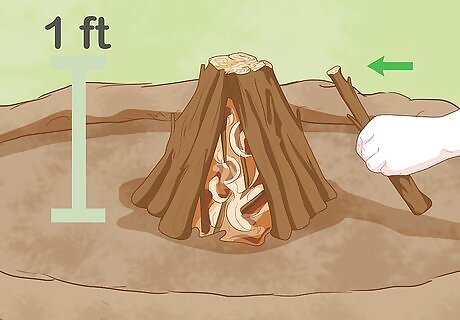
Make a tent with dry, thin twigs around your tinder. Your tinder pile could be dried bark, pieces of paper, or a commercial fire starter. Stand 3 to 4 small, thin twigs around the tinder pile in a triangular tent shape. Make another tent around the first with 3 to 4 slightly larger sticks, then add 1 to 2 more layers until the structure is around 1 foot (30 cm) tall. Use small twigs or pieces of wood to anchor the standing sticks. Stack your sticks loosely so air can fuel the fire. Feel the direction that the wind is blowing, and mark an arrow in the sand or dirt that points in the direction the wind blows. Leave an open space in your tent to allow air to blow into the fire.
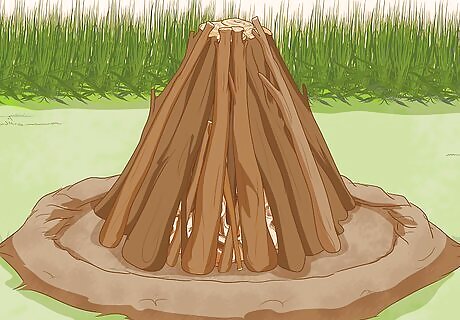
Stack your logs into a pyramid shape. After making the tent around the tinder pile, place 2 logs on either side parallel to the wind’s direction. Then stack another set of logs on the first pair perpendicular to the wind’s direction. Continue stacking layers of logs until you’ve build a pile that looks like a stepped-up pyramid. The pyramid’s height will depend on your amount of wood. As a rule of thumb, the distance between the bonfire and homes or structures should be at least 5 times the pile’s height.
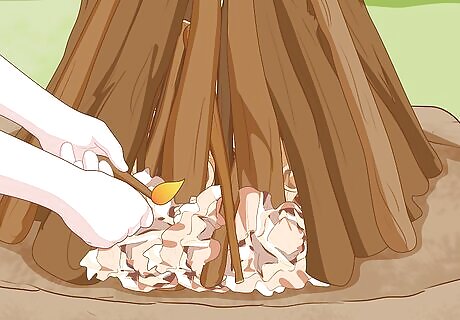
Light the bonfire in the evening with family and friends. During the day, visit your friends, relatives, and neighbors, and invite them to your celebration. At dusk, use a long match or lighter to ignite the tinder at the center of the log pile. Eat dinner, have snacks, sing, and dance with your loved ones as the spark grows into a roaring bonfire. Be sure to keep an eye on your kids and pets around the fire. Have buckets of water or a fire extinguisher handy just in case.
Making Traditional Recipes
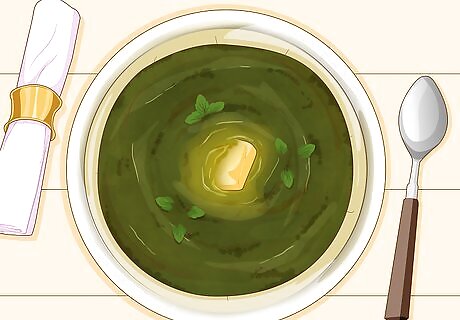
Serve sarson da saag. Finely chop the veggie leaves, then boil them, along with the ginger and 10 garlic cloves, for 1 hour. Let them cool to room temperature, then blend them with the corn flour for 30 seconds. Set the mixture aside, then melt 2 tablespoons (29.6 ml) of ghee in a large pot over medium heat. Add the onions, chilies, and 10 garlic cloves to the melted ghee. When the onions are golden, add the veggie mixture, turmeric, and salt to taste. Lower the heat to medium-low, and cook the mixture for 30 minutes. Pour melted ghee over the saag, then serve it for dinner with makk ki roti for a traditional Lohri meal.
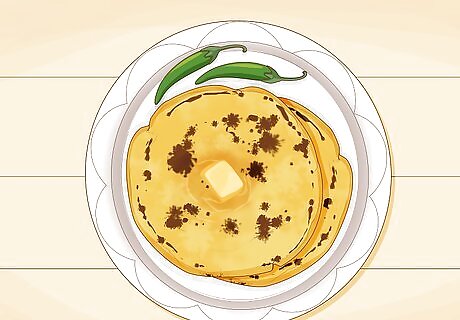
Make makk ki roti. Sift the corn flour and salt, then mix in the fenugreek leaves, chili powder, and ghee. When the ingredients are combined, add 1 to 2 tablespoons (14.8 to 29.6 ml) of hot water, and knead the mixture to create a soft dough. Divide the dough into equally sized balls a little larger than a golf ball. Dust the balls lightly with flour, then roll them out to flatten them. Put a wide pan on the stove over medium heat, then cook the flattened dough in batches. It should take only take about 3 to 5 minutes per side for the roti to become golden. The ghee in the dough will grease the pan, so there’s no need to cook the roti with additional oil or ghee. When they’re done, brush the roti with ghee, and serve them hot with sarson da saag.
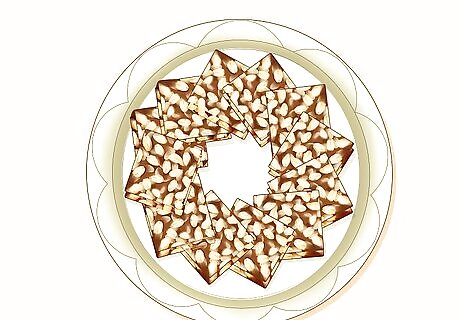
Snack on peanut chikki. Boil the sugar with 120 mL (0.51 c) of water over medium heat for 6 or 7 minutes, or until the mixture thickens and forms a gooey, candy-like consistency. Turn off the heat, add the butter and peanuts, and stir until the mixture is well combined. Grease a baking sheet, then use a roller to spread the mixture over the sheet. Let it cool to room temperature, then cut it into squares.
Practicing Customary Rituals

Give sweets and coins to kids during the day. In the morning on Lohri, kids traditionally sing songs as they knock on doors around their neighborhood. Wish them a happy Lohri, and hand out candy, snacks, or a bit of money. Be sure to join the festivities! Not answering the door or refusing to hand out treats is considered miserly.
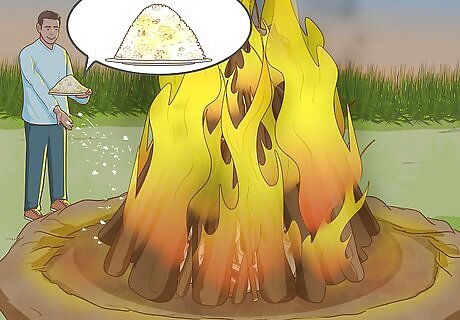
Throw puffed rice, popcorn, and peanuts into the bonfire. After eating a dinner of saag and roti with your friends and family, snack on chikki, popcorn, sesame seeds, nuts, and puffed rice. Be sure to toss snacks into the fire as offerings for a bountiful harvest.
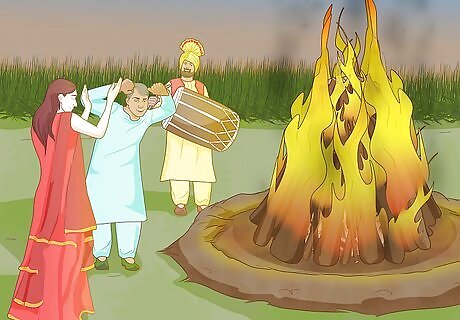
Dance around the fire to the beat of dhols. Sing, beat dhols, or drums, and dance around the fire in celebration. Join together and dance the bhangra into the wee hours of the morning! To dance the bhangra, bounce your body along to the beat of the dhols with your feet shoulder-width apart or as you stand on 1 foot (0.30 m). When you bounce upward, move your hands above your head with your thumbs out and bend your elbows to make an L-shape.

Step up the celebration if you’re a newlywed. You’ll have to go all out if it’s your first Lohri after getting married! Invite all of your friends and family to your home and set up the bonfire. It’s customary for couples to wear their finest clothing, and for women to don their best jewelry and have mehndi painted on their hands. For a newlywed Lohri celebration, be sure to double up on the food and festivities and send your loved ones home with packages of sweets as gifts.


















Comments
0 comment